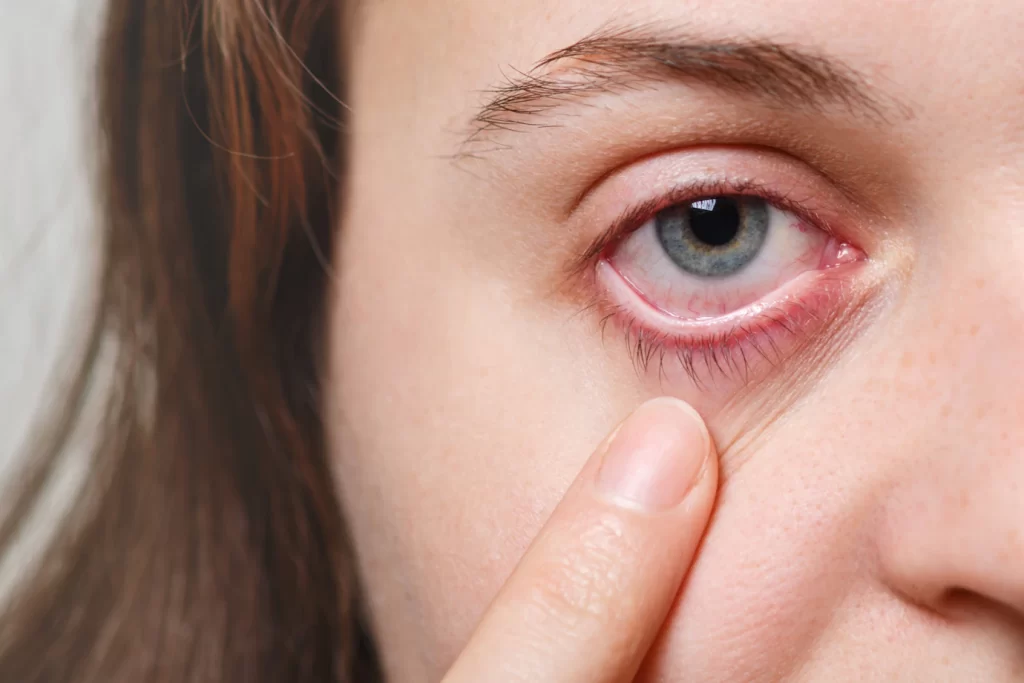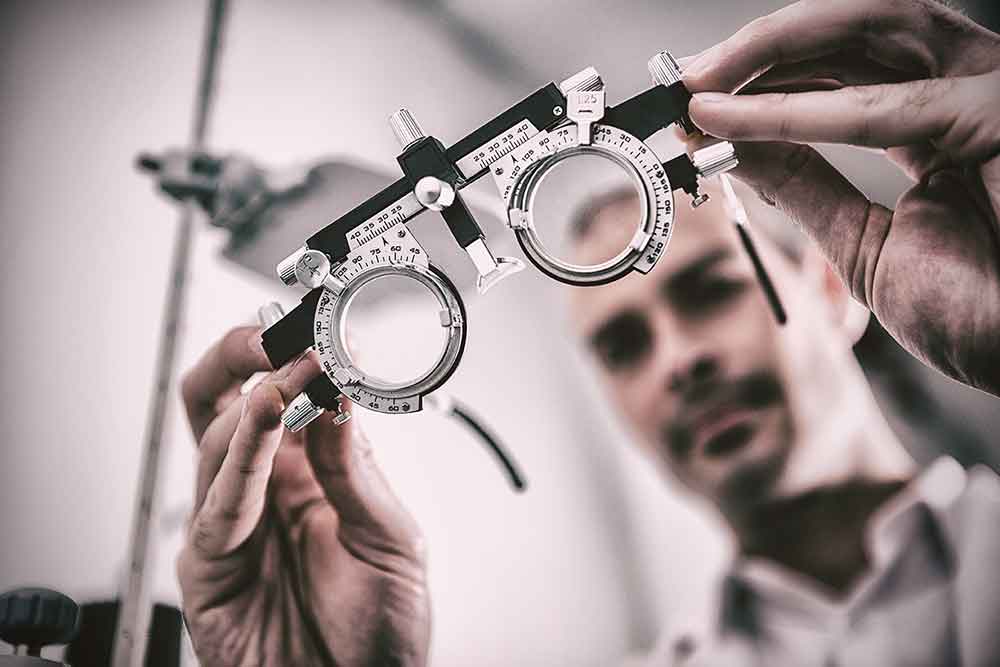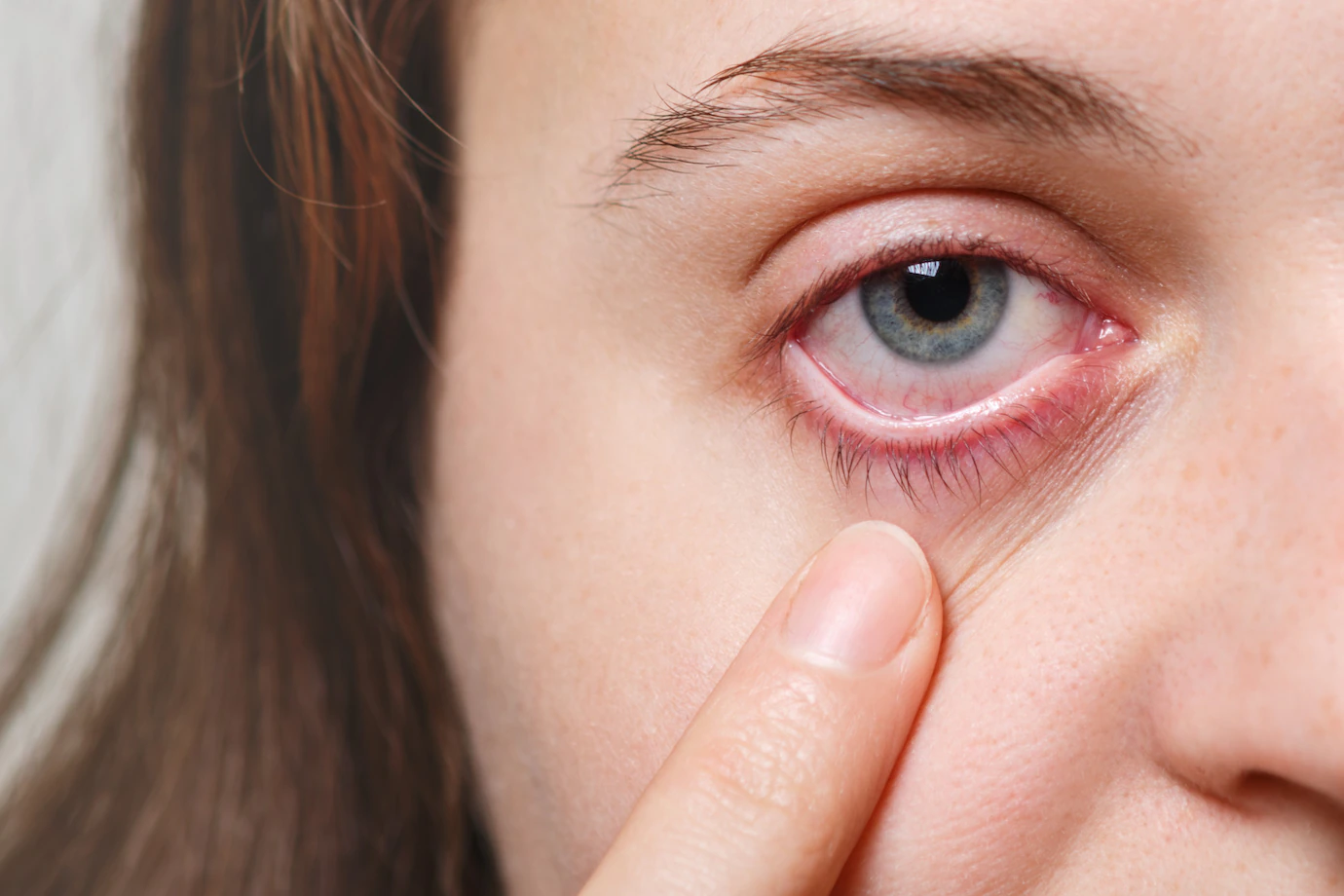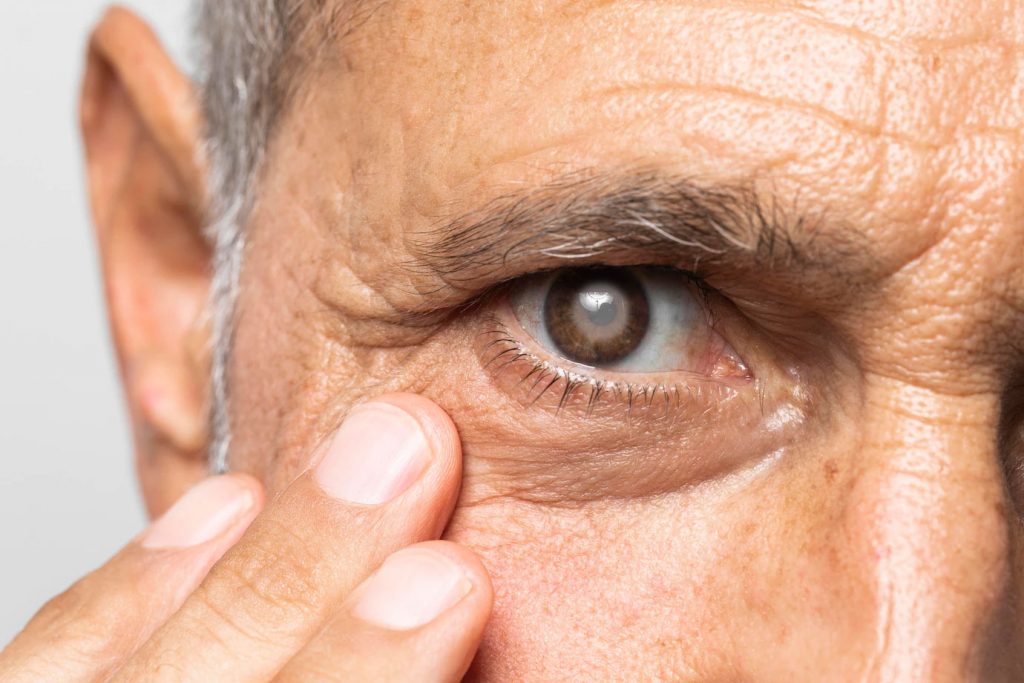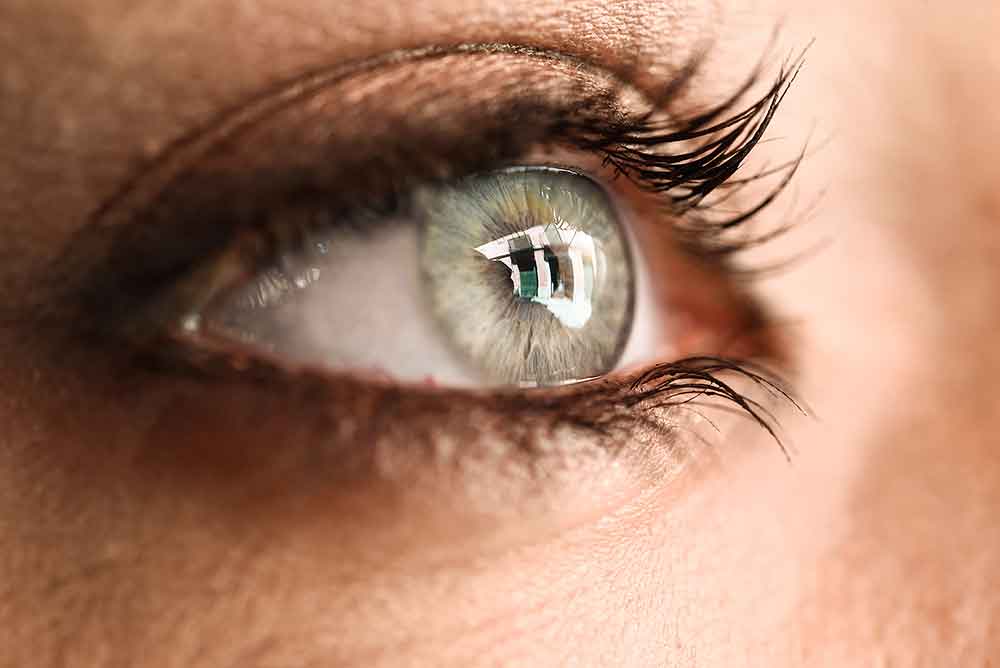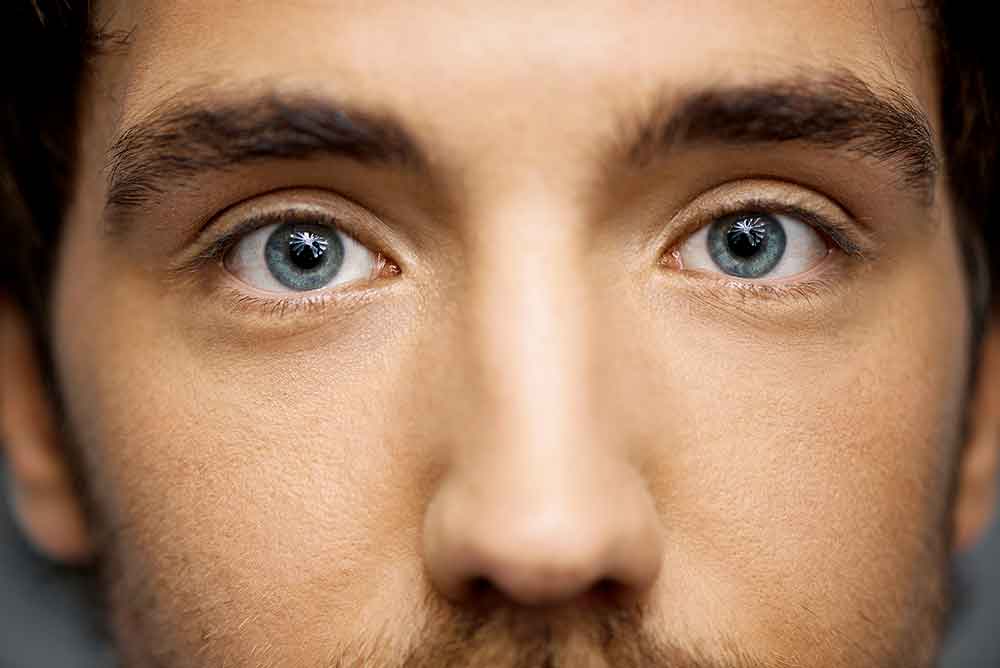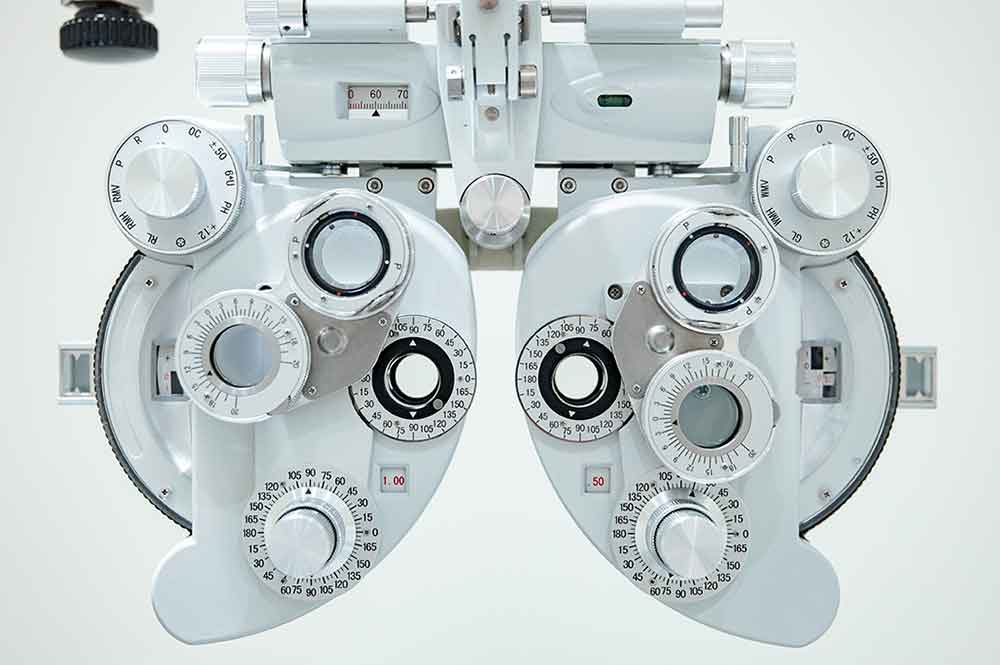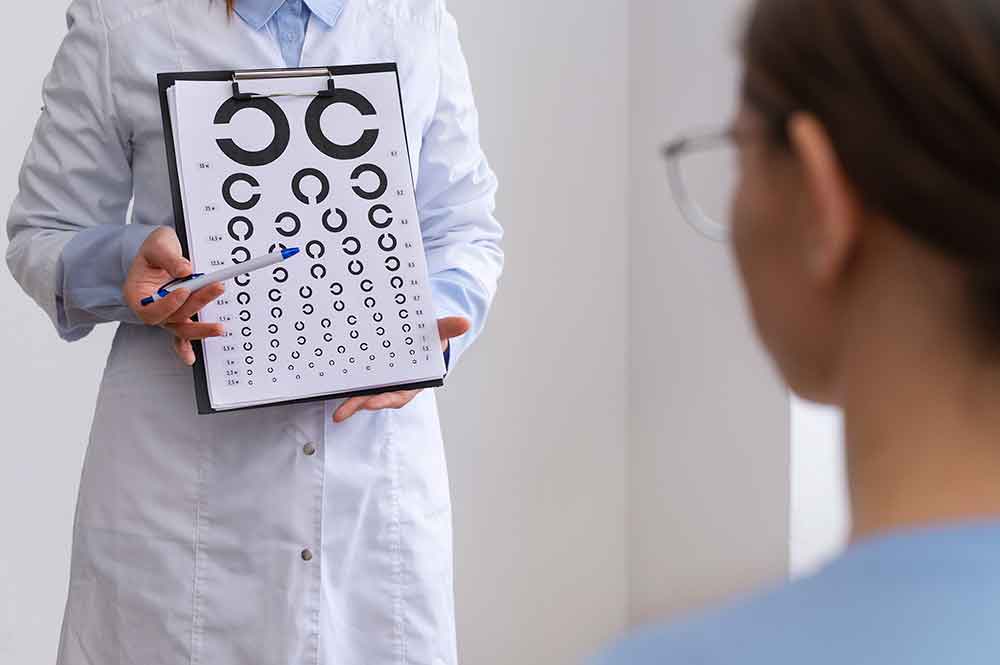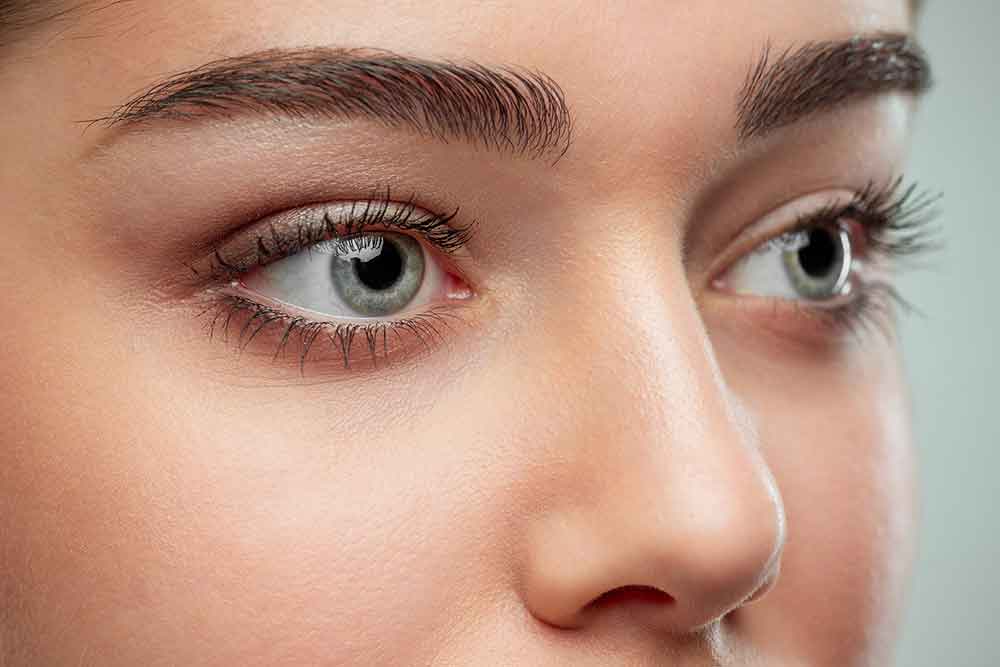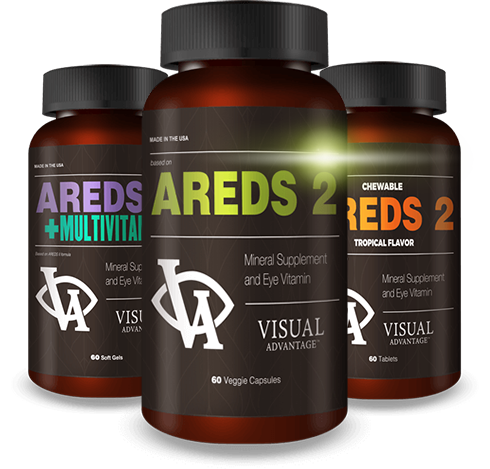Amblyopia: Also called lazy eye. Vision impairment in one eye that causes a person to rely more on their other eye as their primary visual organ. A challenge that is almost always encountered in relation to children.
Anti-reflective coating, also known as A/R coating: A treatment that can be applied to the lenses of your glasses to make them appear clearer and lessen the amount of light that is reflected from their surfaces. This helps to alleviate eye strain and glare that can be distracting. Behind the glasses, your eyes will also be more noticeable to others.
Astigmatism: An abnormal curvature of the cornea, the crystalline lens, or the eye itself can cause astigmatism, which causes the eye to have difficulty focusing light in a consistent manner in all directions. Astigmatism is the medical term for this disease. Vision that is somewhat to moderately blurry and/or strain on the eyes are both symptoms of astigmatism.
Bi-Focal Lenses: Lenses that use two separate unique powers in each lens, typically for close and distant correction. These lenses are also referred to as varifocal lenses.
Cataracts: A cataract is a clouding of the crystalline lens of the eye, which makes it difficult for light to flow through and be focused properly. Cataracts are the leading cause of blindness in the world. In a healthy eye, the crystalline lens appears almost completely transparent; but, damage to the lens, advanced age, or disease might eventually cause it to lose its transparency. A cataract is the medical term for a lens that has become cloudy or opaque. Operable means of treatment.
Color deficiency: A loss of the ability to differentiate between particular hues is referred to as color deficit. The inability to differentiate between different tones of red and green is the most prevalent type of color deficiency. This condition is often sometimes referred to as “color blindness.”
Conjunctivitis: Sometimes known as pinkeye. An inflammation of the conjunctiva, which is the transparent membrane that covers the white area of the eye and the lining of the eyelids, is the underlying cause of this eye ailment. The eyes will frequently seem gritty and swollen in addition to having a reddened appearance. It is frequently caused by a virus and may spread easily. There are really twenty distinct varieties of conjunctivitis, ranging from strains that are rather common and typically do not offer any long-term risk to the eyesight of either you or your child to types that are resistant to medications. To treat pink eye, either give your doctor a call or see them in person.
Cornea: The clear, multilayered front section of the eye that covers the iris and the pupil. It is responsible for the vast majority of the eye’s optical power.
Dry Eye Syndrome: The name given to an eye condition that manifests itself in the form of itching, burning, and irritation of the eyes. This condition is commonly referred to as “dry eye syndrome.” It is one of the most prevalent issues that is addressed by professionals in the field of eye care. In most cases, this condition is brought on by a breakdown (or lack) in the tear film that coats and lubricates the eyes. As we become older, our bodies create less oil, which makes it harder for the eyes’ watery layer to be sealed. Dryness of the eyes can be caused by a number of factors, including hot and dry conditions, some medications, air conditioning, and irritants like cigarette smoke. To assist in alleviating the symptoms associated with the condition, your eye care specialist may recommend “artificial tears” or other types of eye drops for you to use.
Floaters: A generic phrase that is used to describe microscopic specks that move gradually yet noticeably in your range of vision. This term encompasses both floaters and spots. It is possible that a floater or a spot is a small clump of gel or cells in the vitreous, which is the transparent fluid that is found inside of your eye. The most common causes of floaters and spots include age-related changes, trauma to the eye, and vitreous degeneration. If you suddenly see more numbers than usual, you should consult an eye care professional as soon as possible.
Fovea: A little region in the center of the retina that is made up entirely of cone cells is referred to as the fovea. The clarity of our vision can be attributed to the function of this region.
Glaucoma: A common and avoidable cause of vision loss that occurs when there is an abnormally high pressure within the eye, causing damage to the optic nerve. ability to be treated with the use of pharmaceutical medicines or surgical procedures.
High(er) Index: A lens material that is more dense than conventional plastic but produces lenses that are smaller and lighter. Index is short for “index refraction,” which describes the rate at which light moves through the lens. There is a range of higher index lenses available, starting at 1.56 and going up to 1.74. (the higher the number, the thinner the lens). People who need stronger prescription eyeglasses can benefit from using them.
Hyperopia: A condition in which one can see things in the distance quite clearly while seeing things up near less clearly. In common parlance, this condition is referred to as “farsighted.”
Iris: The pigmented (colored) membrane that controls the size of the pupil and located between the cornea and the crystalline lens of the eye. It is called the iris.
Lens: The crystalline Lens is the natural lens of the eye, and it is placed just below the iris. It is able to alter its shape in order to concentrate light rays onto the retina.
Macula is the area of the retina that is responsible for the clear, focused vision that is necessary for reading and driving.
Macular degeneration: A range of disorders that include a degradation of the macula, which leads to a loss of center vision, which is essential for having eyesight that is both crisp and clear. In those aged 65 and older, it is the main cause of vision loss and blindness. [Citation needed] [Citation needed] There are a several different names for macular degeneration, including AMD and ARMD (age-related macular degeneration).
Mild Eye Irritation: A mild form of eye irritation that is brought on by the presence of a foreign body on the surface of the eye, such as eyelashes, sand, or dirt. First, wash your hands, and then use tepid water to flush the eye for up to a quarter of an hour. Immediately seek the assistance of a qualified medical expert if the irritation persists and the discomfort continues.
Multi-Focal Lenses: These lenses allow you to focus on two or more distances through the same lens. Multi-focal lenses are becoming increasingly popular (usually distance, intermediate, and near). These lenses are also referred to as bi-focals, tri-focals, and multi-focals.
Myopia: Refers to a situation in which objects in the distance are seen less clearly whereas objects that are up close are viewed clearly. In common parlance, this condition is referred to as “nearsighted.”
Nyctalopia: A condition that manifests itself as reduced vision in low-light or completely dark environments. It is often commonly referred to as “night blindness.”
Optic Nerve: The bundle of nerve fibers responsible for transmitting signals from the eyes to the brain.
Photochromic Lenses: Eyeglasses or contact lenses that, when exposed to ultraviolet (UV) radiation, transform themselves from transparent to opaque.
Photophobia: A disorder that can have a wide variety of underlying reasons and can be triggered by a wide variety of drugs. Photophobia is also known as “light sensitivity.” Anyone who suffers from photophobia must take precautions to avoid exposure to strong light.
Plastic 1.50: A lens material that is frequently used for prescriptions that are not severe. Nowadays, only a very small percentage of lenses are constructed from glass because of its higher density, greater thickness, and fragility. Additionally known by the name standard index, as well as the brand designation CR-39.
Polarized lenses: This form of lens has an invisible “polarized” filter that helps to cut down on blinding glare from reflecting surfaces such as water and snow for better visual acuity (sharpness) under bright light settings. This type of lens is also known as “polarized” lenses.
Polycarbonate lens: A type of lens material that is more impact resistant than regular plastic while also being significantly smaller and lighter. Lenses made of polycarbonate material have become the industry standard for children’s eyewear.
Presbyopia: A condition in which the crystalline lens in the eye, which normally begins to lose its ability to alter shape around the age of 40, gradually loses its ability to concentrate light at all distances, especially near vision. Reading glasses, bi-focal glasses, or progressive lenses are the three types of eyewear that can treat presbyopia. Squinting, headaches, and eye strain are some other symptoms of this condition.
Progressive lenses: A type of multifocal or bi-focal lens that do not have any visible lines and have a lens power that progressively changes from distance to near. Additionally known as PALs (Progressive Addition Lenses).
Pterygium is the medical term for an elevated growth on the eye that is most frequently and directly linked to excessive exposure to the sun. Conditions that are dry and dusty could also have a role in the development of these growths. It is essential to take precautions against ultraviolet radiation, including protecting one’s eyes.
Pupil: The opening in the center of the iris, known as the pupil, that can be adjusted to regulate the amount of light that enters the eye.
Pupillometer: A device that measures the amount of space that exists between the pupils. It is necessary to take this measurement in order to appropriately position the eyeglass prescription in front of the eye.
Refraction : A test that is used to identify an eye’s refractive error as well as the most effective pair of corrective lenses that can be given.
Retina: Located in the back two-thirds of the eye and is responsible for converting visual impulses from the optical system of the eye into electrical signals that are sent to the brain via the optic nerve. consists of layers, each of which may contain rods or cones.
Rods and cones: The two types of cells that are found in the human eye, and the retina uses them to analyze light. Cones are responsible for sharp visual acuity and color perception, while rods are responsible for seeing in dim light (also known as night vision).
Sclera: often known as the white part of the eye, is made up of fibrous tissue and serves to protect the organs and cells that are located deeper within the eye.
Single-Vision Lenses: Lenses that only treat a single type of vision defect, such as being too close or too farsighted.
Snellen Chart: This is the most popular type of eye chart, and it is used in eye examinations. It is typically topped with a huge letter “E.” Your eye’s visual acuity, or your capacity to see fine details clearly, will be evaluated using this method.
Strabismus: A loss of coordination between the eyes that can manifest itself in a variety of ways, including one or both eyes turning in, out, up, or down. In young children, this disease is also referred to as “crossed eyes.”
Ultraviolet radiation/UVR: A term that refers to light waves emitted by the sun that include both UVA and UVB rays. Ultraviolet radiation is also commonly referred to as “UV Rays.” In the absence of appropriate eye protection, prolonged exposure to UV radiation can cause a variety of eye disorders as well as damage to the eye.
UV Protection: The capacity of a lens to shield the wearer’s eyes from potentially damaging rays of the sun. To protect one’s eyes from the sun’s rays as much as possible, it is advisable to wear glasses that block 100% of both UVA and UVB rays.
Visual acuity: The evaluation of the eye’s capacity to differentiate between different aspects of an object’s shape and details, and it is numerically stated as 20/20, 20/70, etc.
